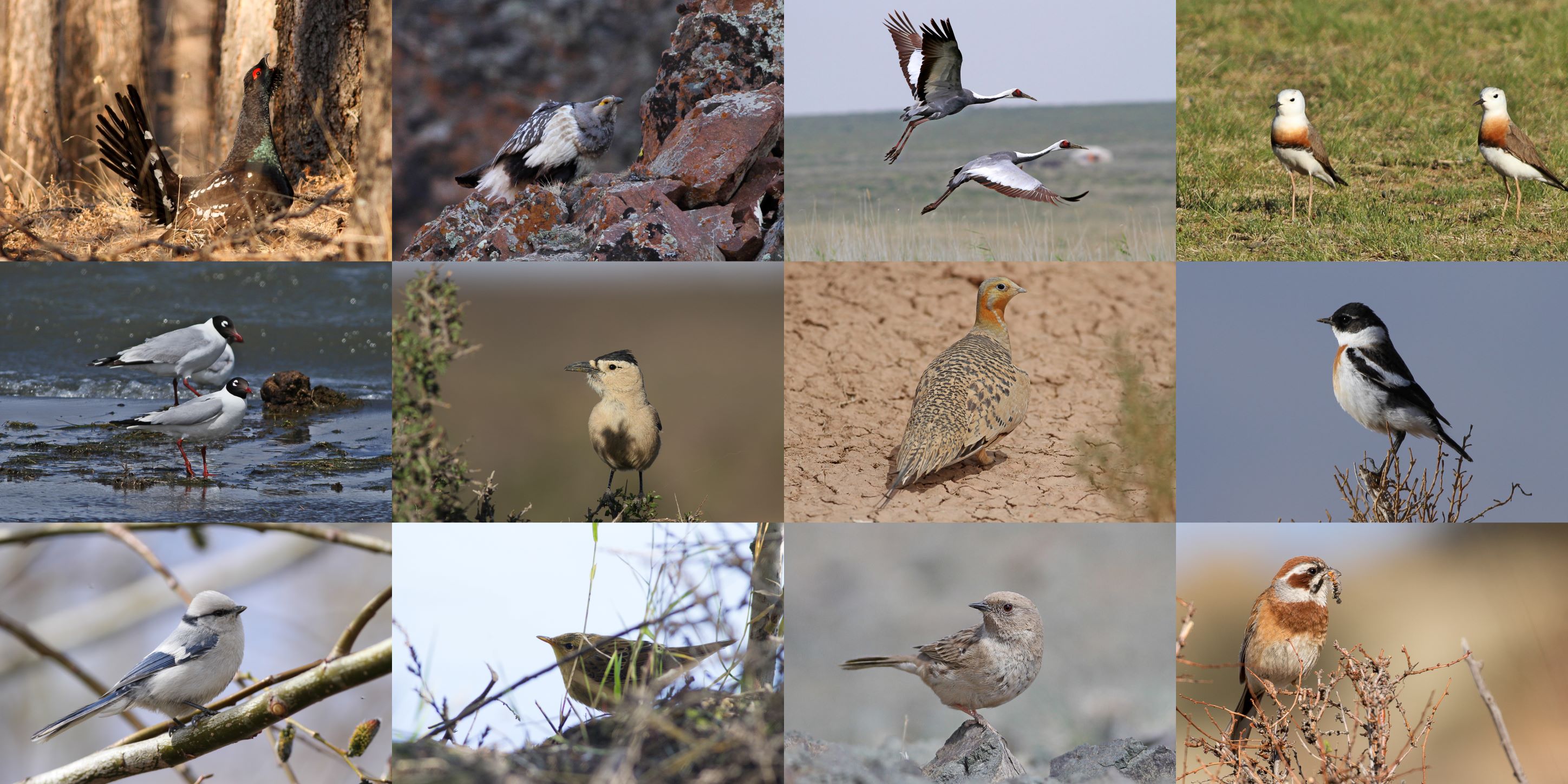Birds of Mongolia:
Over 520 bird species are recorded in Mongolia with around 90 resident species. The majority of the birds occurring in the country are migratory. They are either passing through during their migration between the high Russian Arctic and Siberian taiga or are migrating to Mongolia to breed during the summer.
Birds of Mongolia can be divided into 4 categories depending on habitat preference and occurrence. 1. Gobi desert and Altai mountain. 2 Taiga forest 3. Steppe and shallow lakes 4. Eastern Mongolia.
Few of these species have a wide distribution across the northern Palearctic (Taiga forest and Russian high Arctic) and regular vagrants in Europe (Western Palearctic).
- Mongolian Gobi Desert and Altai mountain share many Central Asian breeding endemic species with our former territory Inner Mongolia and other adjacent regions such as Northern China (Xinjiang, Gansu and Qinghai) and Russia.
Species: Altai Snowcock, Relict Gull, Mongolian Groundjay, Pallas’s Sandgrouse, Saxaul Sparrow, Mongolian Lark, Stejneger’s stonechat, Güldenstädt's redstart, Altai Accentor, Mongolian Accentor, Isabelline Shrike, Steppe Grey Shrike, Mongolian Finch, Asian Rosy Finch, Brandt’s Mountain Finch, Beautiful Rosefinch, Grey-necked Bunting and Godlewski’s Bunting. - Taiga forest: European birdwatchers are more interested in species mentioned above and some other forest species occur in the eastern part of the Taiga forest of Siberia such as Black-billed Capercaillie, Daurian Partridge, Azure-winged Magpie, Siberian Thrushes – (Naumann’s, Dusky, Eye-browed, Black-throated, Red-throated, White’s and Siberian), Azure tit, Brown Shrike, Dark-sided Flycatcher, Asian brown Flycatcher, Siberian Rubythroat, Taiga Flycatcher, Orange-flanked Bluetail, Eversmann’s Redstart, Chinese Bush Warbler, Two-barred Warbler, Pallas’s leaf Warbler, Dusky Warbler, Arctic Warbler, Hume’s leaf Warbler, Long-tailed Rosefinch, Pine Bunting, Meadow Bunting, Black-faced Bunting and Yellow-breasted Bunting.
- Other specialties occur in the steppe and its shallow lakes include Saker Falcon, Upland Buzzard, Steppe Eagle, Cinereous Vulture, Oriental Plover, Swan Goose, Bar-headed Goose, Stejneger’s Scoter, Pallas’s fish Eagle, Eastern marsh Harrier, Pallas’s Gull, White-naped Crane, Siberian Crane, Hooded Crane, Demoiselle Crane, White-winged Tern, Swinhoe’s Snipe, Pin-tailed Snipe and Mongolian Lark, Mongolian short-toed Lark, Asian short-toed Lark, Père David's Snowfinch and Pallas’s reed Bunting (subspecies lydiae).
- Eastern Mongolia: Many East Asian species that migrate along the East Asian and Australian Flyway are included in this category.
Species: Ring-necked Pheasant /pallasi subspecies/, Grey-headed Lapwing, Oriental Plover, Far-eastern Curlew, Little Curlew, Great Knot, Sharp-tailed Sandpiper, Broad-billed Sandpiper, Bar-tailed Godwit, Long-toed Stint, Red-necked Stint, Grey Nightjar, Siberian Thrush, White-throated Rock Thrush, Siberian blue Robin, Dark-sided Flycatcher, Mugimaki Flycatcher, Yellow-rumped Flycatcher, Chinese bush Warbler, Lanceolated Warbler, Marsh Grassbird, Baikal bush Warbler, Pallas’s grasshopper Warbler, Black-browed reed warbler, Radde's Warbler, Northern Parrotbill, Jankowski's Bunting, Tristram's Bunting, Chestnut Bunting, Chestnut-eared Bunting, Rustic Bunting, Yellow-browed Bunting, Yellow-breasted Bunting, Japanese reed Bunting and Yellow-throated/Elegant Bunting.

Best time to visit Mongolia for birders:
Usually, the spring and autumn migration season is the best time to observe Siberian-bound migrants that are coming back from their wintering grounds in Africa, South East Asia and South Asia.
If you are not free during this period summer is also a pleasant time to travel to Mongolia.


